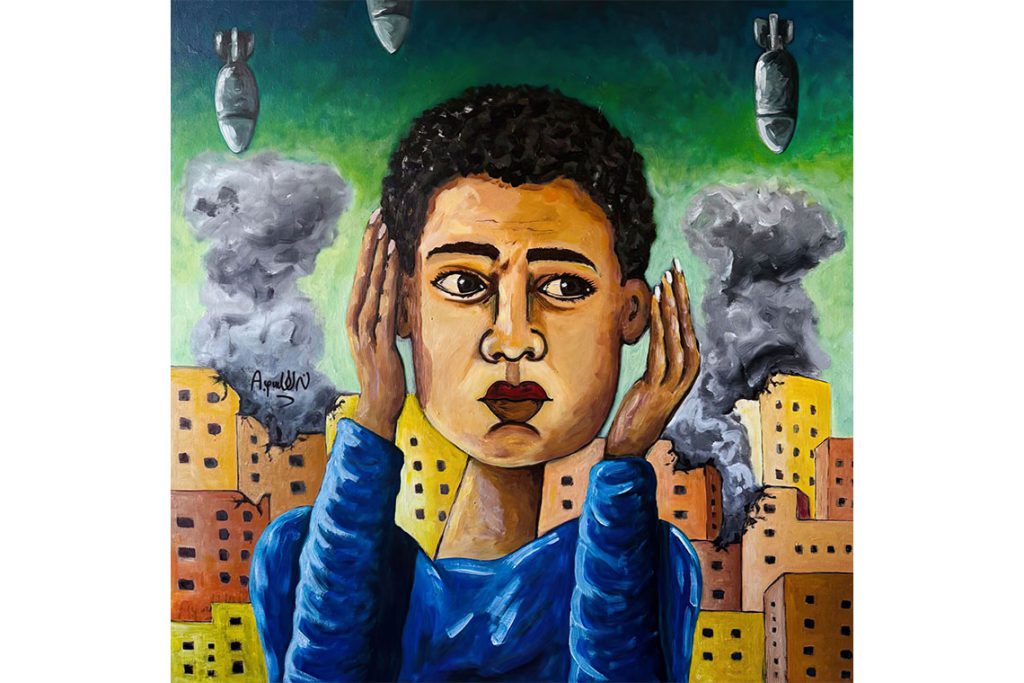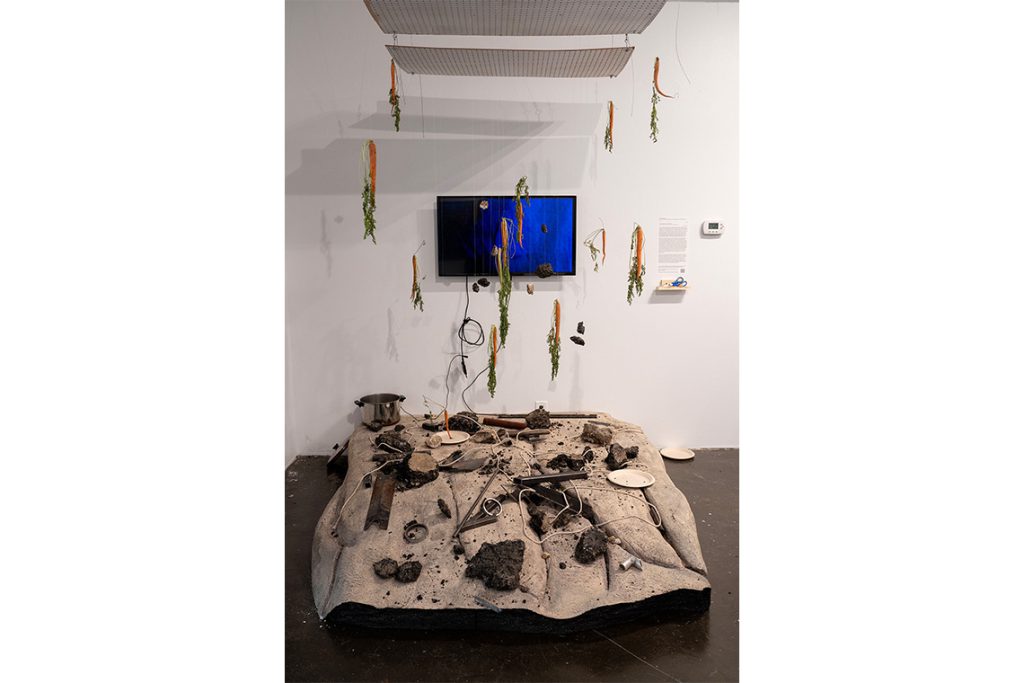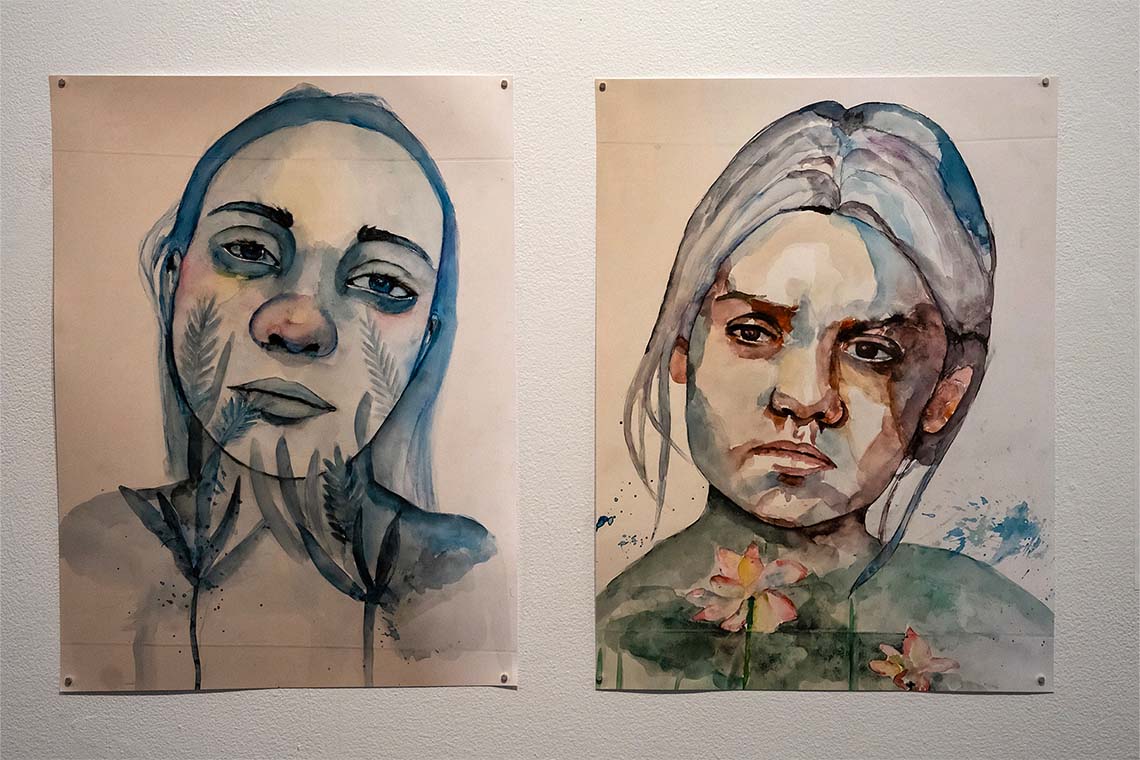Recess in New York City is among 17 venues to host different editions of the global art event that was launched by the Forbidden Museum of Jabal Al Risan in the spring of 2024.
Rootedness and displacement seem to be on a more precarious course now than ever, and nowhere is the innate right to inhabit one’s place of kin and belonging being challenged more than in Gaza. This is the foundational principle that the organisers of the Gaza Biennale consider in their efforts to mount exhibitions by Gaza artists across the globe. As they choose to remain anonymous, the Palestine-based art practitioners explain to Canvas that the phoenix is a suitable metaphor for their project’s artists, “thriving amidst destruction and flying across the world to land in different locations.”
After making stops in cities such as Istanbul, Dublin and Valencia, the bird currently has a temporary nest in Brooklyn, where the non-profit Recess initially hosted an exhibition of 28 artists for four days in mid-September. Various shorter iterations of the selection remain on view until 20 December, with works by different participants continuing to rotate in the front gallery. Print replicas of the artworks, which range from acrylic paintings and watercolours to sculpture, represent original pieces which could not travel overseas due to logistical challenges.

During its short run, the larger outing conveyed an immediate sense of reality which has lingered more profoundly than most other politically charged shows, at least for a New York audience. While heavily familiar with common press release sayings such as “urgent matters” or “political unrest”, most local viewers perhaps never come this close with the reality of an artist’s unforeseeable well-being as they were looking at their art. Vulnerability which stretched for thousands of miles between here and there evidenced a peculiar side of human perseverance when making art in the most horrendous circumstances.
The compelling brutality of portraiture delivers some of the most arresting statements in the show, with the human likeness laying the ground for the inexplicable to roar. Alaá Alshawa’s two watercolour portraits of young women attempt to bridge the disarming immediacy of the very moment with the future, which seems so opaque for the youth of Gaza. The liquidity of the 23-year-old old artist’s material has a firm grasp on the horrors captured in the gazes of her subjects. One girl’s questioning eyes are locked on us while trees emerge from her face; the other subject looks away with a determined attention that defies exhaustion and fear. Murad Al-Assar’s quartet of paintings (all 2025) similarly embody emotional rawness by way of the war’s toll on the body. The Rose and the War shows a boy holding a bouquet of the titular flowers which spring from his arms and surround him on both sides, both decorating and guarding against impending peril. The multi-sensory attack of war on the body echoes in Noise of Death, in which a boy covers his ears to soften the sound of bomb blasts.

The show’s only three-dimensional installation is Ghanem Alden’s The Rocket and the Carrot (2025), a visual cacophony of stones, debris, burlap and fabric that carves out a war zone in the corner of the gallery. Hung from the ceiling, carrots hover above the chaotic layout, creating a contrast between their bright orange hue and the grim greyness beneath. A pair of scissors invites visitors to cut one of the strings and take away the vegetable, with Alden reminding viewers of the ongoing systemic starvation in Gaza and the woefully inadequate supplies of food aid that are sometimes literally dropped onto civilians. The carrot signals a satirical twist on the “carrot-and-stick” strategy so often used in war, while the performative act of giving that veils horrendous outcomes spills into the audience experience with the invitation to grab a carrot.“
Gaza Biennale is horizontal and expansive, not vertical, and is based on partnerships,” say the organisers. They hand the curatorial task in each iteration to the host institution, which selects participant artists out of a submission pool. The prevalent thread across the show remains that of resilience. Besides a perseverance that is physical, working amid destroyed or partly wrecked studios and lacking art supplies, the strength stems from the artists’ awareness for art’s mobility across places and times, travelling over the toughest borders and penetrating into memories – despite efforts for erasure. The organisers’ message is to make the world pay attention to the artists of Gaza and to understand the depth and breadth of what do: “The Recess exhibition is just a glimpse into their art – each artist presented here has an entire body of work”.



